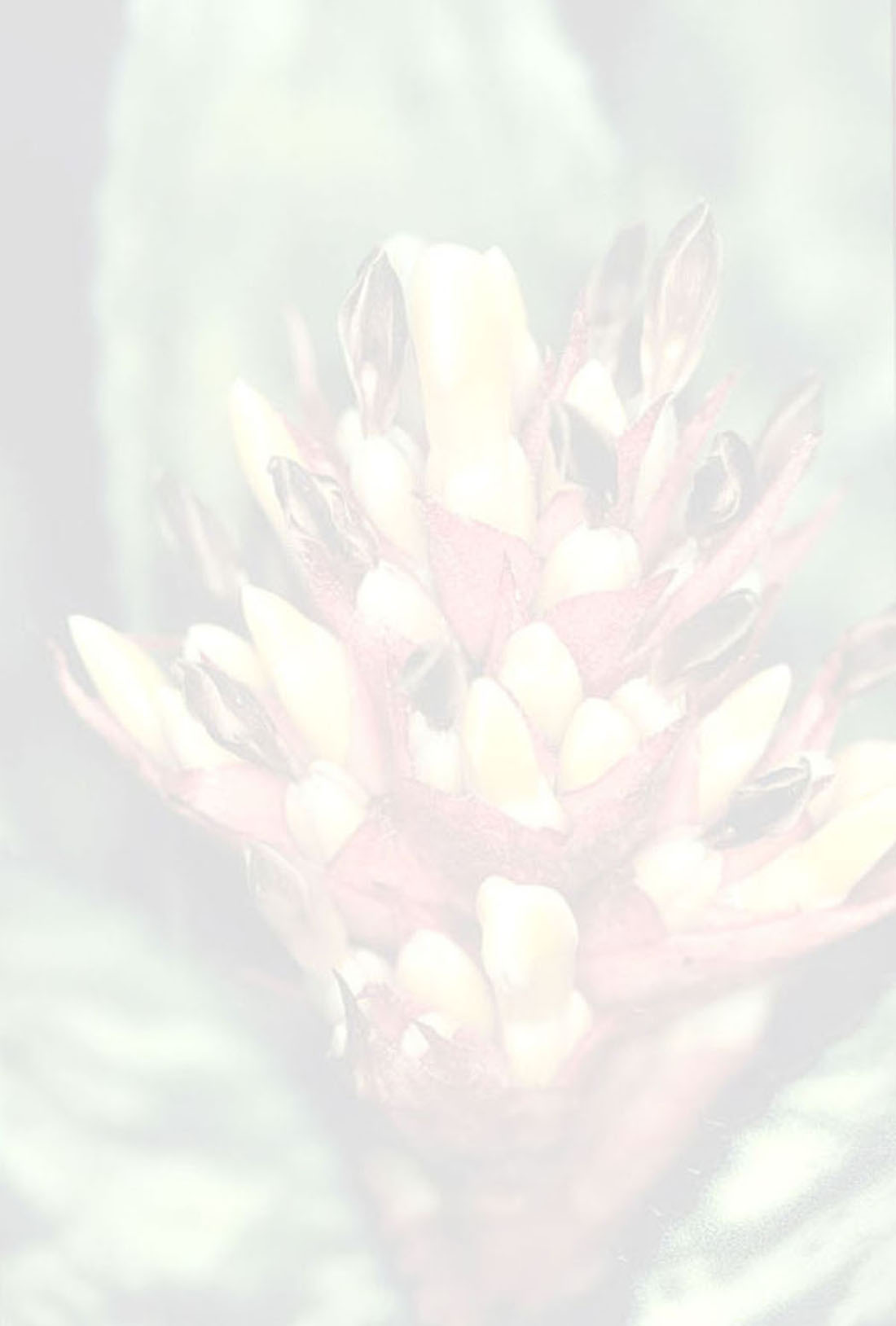


plant epiphytic, flowering 66–75 cm tall, propagating by short basal shoots. leaves 15 to 20, coriaceous, forming a narrow crateriform rosette; sheath elliptic, 18–23 x 8–9 cm, densely pale lepidote, abaxially dark castaneous near the base, adaxially purplish-wine toward the apex; blade linear, inconspicuously if at all narrowed toward the base, 65 x 4–5.5 cm, densely and minutely white-lepidote abaxially, inconspicuously and sparsely white-lepidote adaxially, apex acute, ending in a distinctly triangular- apiculate rigid spine 1–1.5 x 0.5–0.7 cm, blackish (including apical margins), corrugate, margins densely spinose, spines prevailing antrorse-uncinate, castaneous, 0.5 mm long, 1–5 mm apart. inflorescence: peduncle erect, 32–38 cm long, 0.7–0.8 cm in diameter, inconspicuously white-lepidote with fimbriate trichomes to glabrous, finely sulcate, greenish; peduncle bracts narrowly sublinear-lanceolate to ovate-lanceolate, apex acuminate, 3–5 x 1 cm, stramineous, inconspicuously white-lepidote toward the apex, nerved, densely spinulose toward the apex, erect, shorter to exceeding the internodes, partially exposing the peduncle; fertile part narrowly paniculate, once-branched, (28-) 34–40 cm long, 10–14 cm in diameter, shorter to exceeding the leaves, rachis straight, sparsely and inconspicuously white-sublanate to glabrous; primary bracts resembling the upper peduncle bracts but gradually smaller and narrower, distinctly shorter than the branches but exceeding the basal peduncle, spreading, stramineous, remotely spinulose to entire; primary branches (17-) 23 to 40, subdensely to densely arranged, cylindrical, suberect to subspreading, with 8 (the shorter ones) to 38 (the longer ones) flowers, 1.5–2 cm in diameter (excluding the petals), bearing at the apex an inconspicuous coma of sterile bracts, densely flowered, the basal ones 5-m cm long, stipes 0.3–1 cm long, naked, rachis straight to slightly if at all flexuous, glabrous, pale yellowish-green, 1.5–2 mm in diameter, subangulose, sulcate, the terminal branch not distinct from the lateral ones; floral bracts inconspicuous, castaneous-stramineous, 4–6 mm long, with a broadly triangular-ovate base 1–2 x 2 mm, ending in a 3–4 mm long spine flat toward the base and acicular toward the apex, entire, slightly shorter to equaling the ovary, finely nerved. flowers ca 12 mm long (when petals extended), sessile, densely and polystichously arranged, subverticillate, suberect to subspreading, with a sweet fragrance; sepals strongly asymmetrical, ca 4 x 3 mm including the 1.5–2.5 mm long apical, suberect, dark brown, acicular mucro, connate at base for ca 1 mm, glabrous, pale greenish-yellow; petals lanceolate, acute and apiculate, ca 7 x 2.5 mm, erect at base and spreading- recurved toward the apex at anthesis, free, naked, bearing 2 conspicuous longitudinal callosities equaling the filaments, white with apex pale lilac. stamens: filament ca 4.5 mm long, the antepetalous ones adnate to the petals for 2.5–3 mm, the antesepalous ones free; anther ca 2 mm long, base sagittate, apex distinctly apiculate, dorsifixed near the middle; pollen subglobose, inconspicuously biporate, exine reticulate, lumina polygonal, muri slightly thickened. pistil: stigma conduplicate-spiral, ovate, lobes inconspicuously crenulate, ca 1 mm long, papillose, green; ovary obovate, terete, ca 5 mm long, ca 3.5 mm in diameter, glabrous, pale green; placentation apical; ovules obtuse; epigynous tube inconspicuous. fruits blue.Edited from (29-03-2017): Siqueira & Leme 2007. (protologue) Fragments of the Atlantic Forest of Northeast Brazil - Biodiversity, Conservation and the Bromeliads .